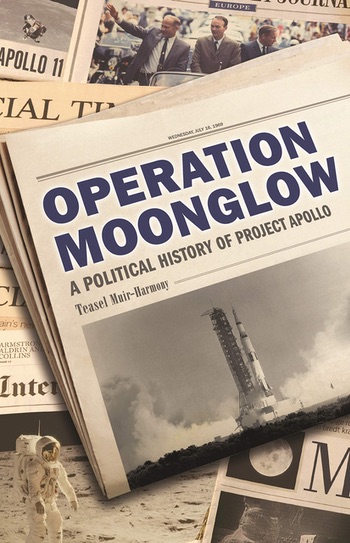Review: Operation Moonglowby Jeff Foust
|
| In the long term, “the greatest geopolitical rewards of Project Apollo came from the international public’s sense of personal participation in this American-led endeavor.” |
The US initially did so from a position of weakness, as the Soviet Union reaped the benefits of being the first to launch a satellite and then a human. But over the course of the 1960s, in parallel with the infrastructure needed to send astronauts to the Moon, the government also built up a parallel information infrastructure, spreading the word about the space program by every means imaginable. That included the Friendship 7 capsule tour, trips around the world by astronauts, arranging for visits by foreign journalists to the Kennedy Space Center and other facilities, and ensuring there was live coverage of key events, like Apollo 11, around as much of the world as possible thanks to new communications satellites.
The Soviets, of course, did their own publicity for their space program, but one difference that Muir-Harmony highlights is the greater openness of the American program. While Soviets brought models of spacecraft, Americans brought actual spacecraft, and offered far more technical information. Live broadcasts were another tool to show how much the US was willing to share about its space program, and by extension its form of government. An Austrian newspaper quipped that “not even a white mouse can be launched without the nation and the world learning about it a few minutes later. Cape Kennedy symbolizes democracy.”
That messaging changed over the course of the 1960s. It started out as simply demonstrating the superiority of the US, but shifted later in the decade. “No longer were space feats employed primarily to highlight American prestige and power. Instead, the emphasis of this programming portrayed spaceflight as a global accomplishment undertaken ‘for all humankind,’” she writes, a shift she credits to feedback from diplomats around the world interacting with governments and the public. Buttons given away in places like Belgrade and Warsaw featured Apollo, but didn’t mention the US (although they were in red, white, and blue.) That may explain, she suggests, why so many people around the world said “we” landed on the Moon, when the program was a project of the US.
There were limits to this spaceflight diplomacy, and the achievements of NASA could do only so much to counterbalance racial unrest and the war in Vietnam. But in the long term, she concludes, “the greatest geopolitical rewards of Project Apollo came from the international public’s sense of personal participation in this American-led endeavor.” That’s a message that comes through clearly in this fascinating account of the links between spaceflight and diplomacy in the early Space Age.
Note: we are temporarily moderating all comments submitted to deal with a surge in spam.
